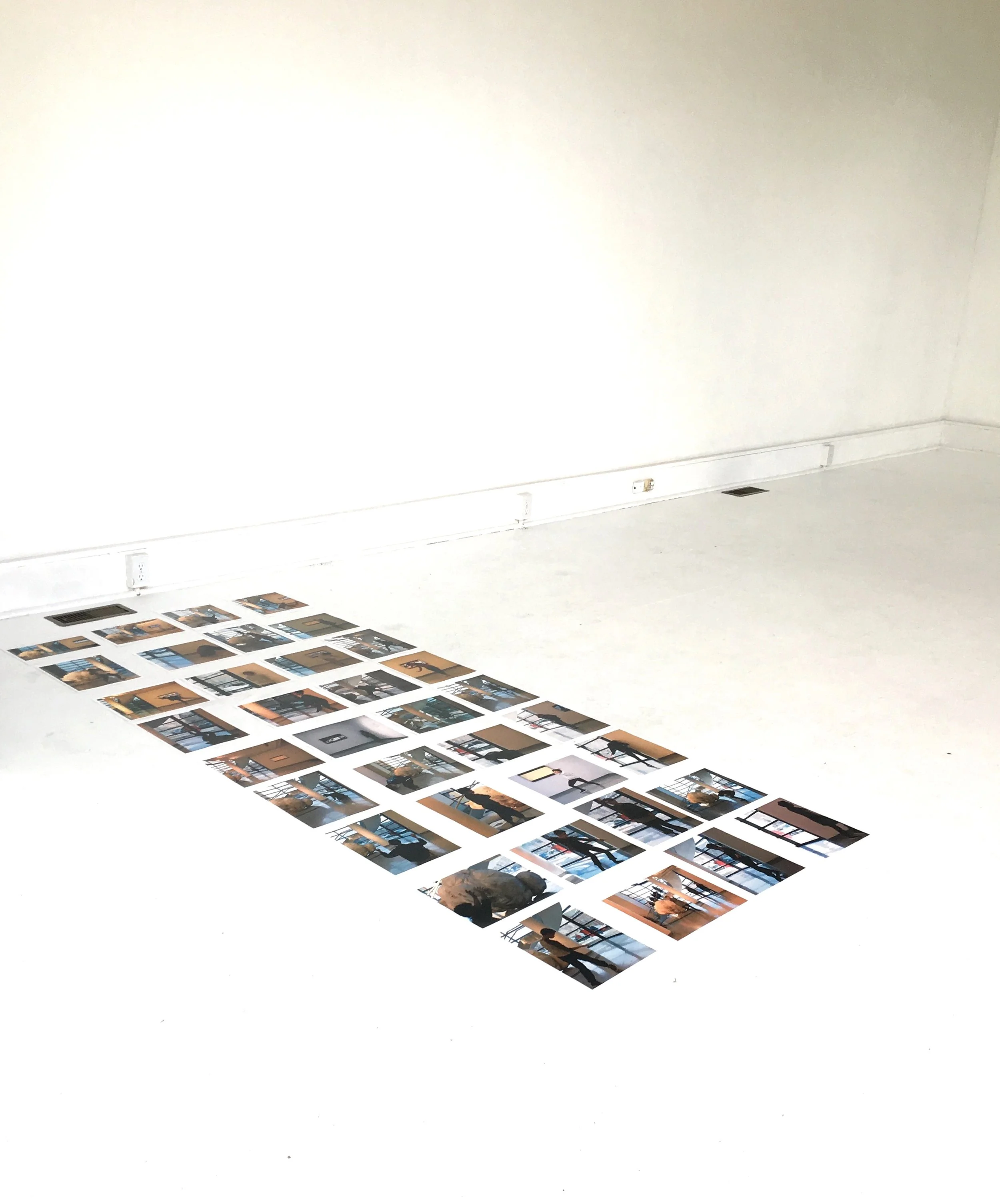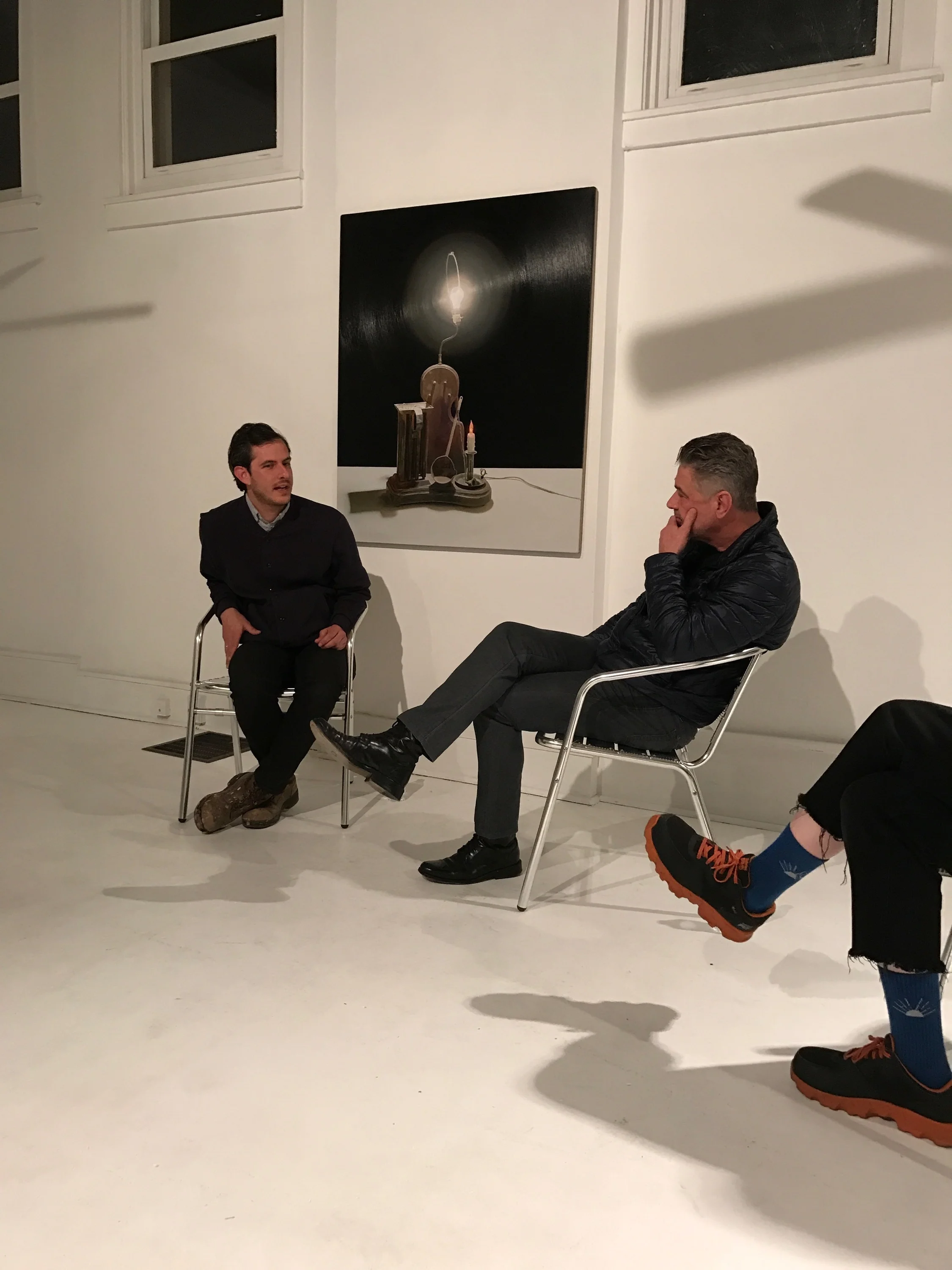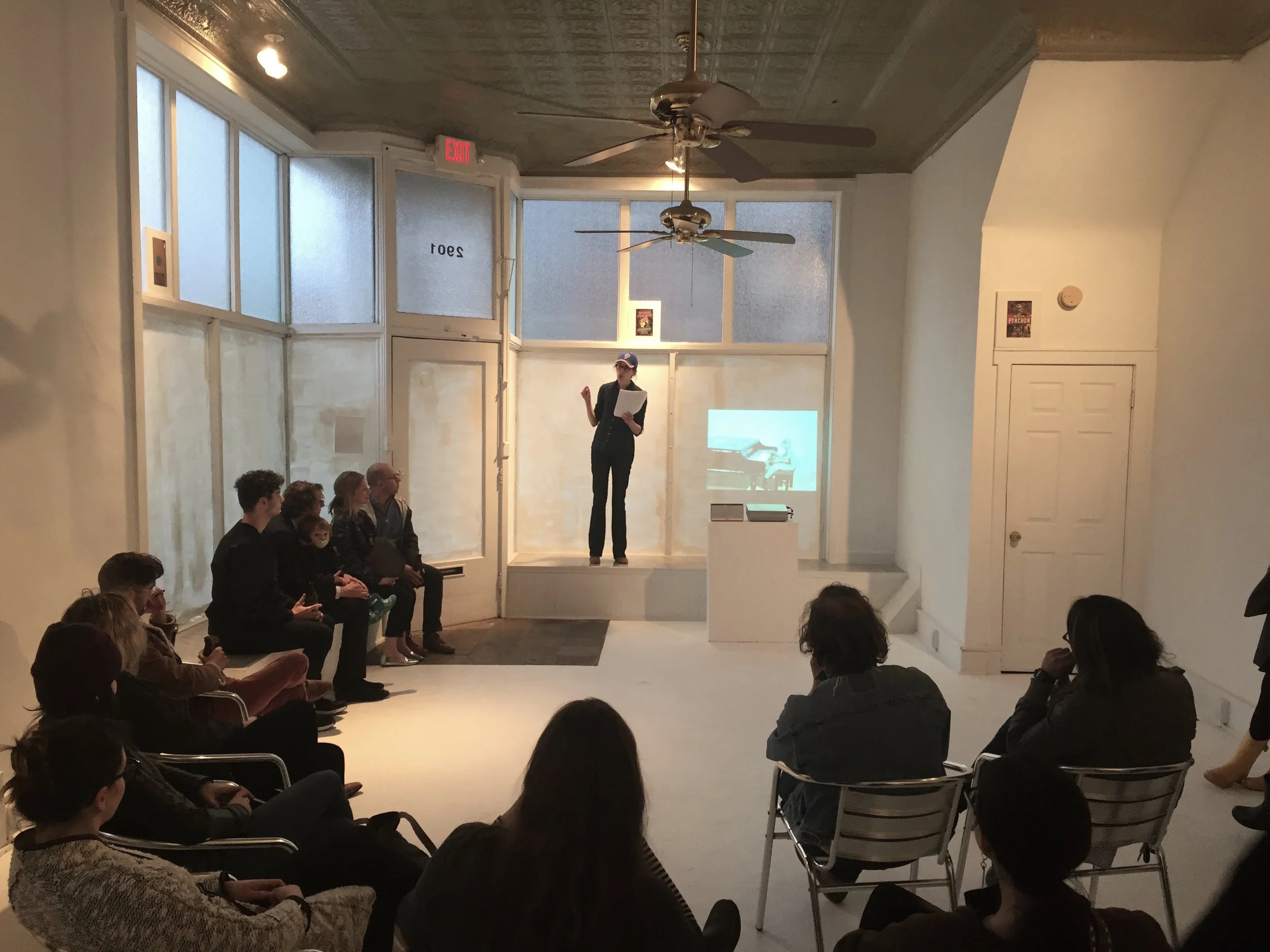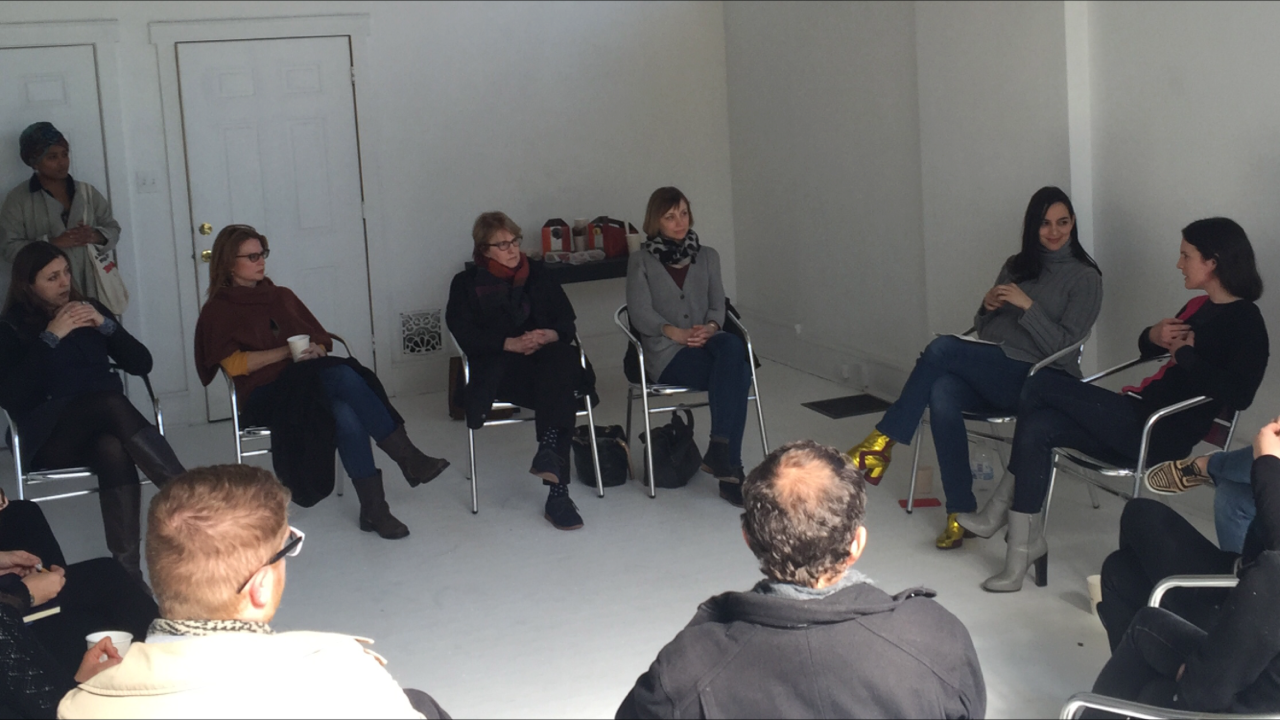Robin Cameron October 14 - November 29, 2017
The Manifesto of No
When someone says: No Shirt, No Shoes, No Service. No photocopying, recording or otherwise, without the prior written permission of the publisher. No Strings Attached. No Reservations. Dr. No. Nope. Nada. Nuh-uh. Phhhhht. No Age. No doubt. Plastic Ono Band. No dogs. No loud music. No ball playing. No bake. No Carbs. No-name slobs. No love. No woman, No cry. No problem. No idea. No regrets. Nope dope. No, no, no. No Exit. No Fixed Address. Going nowhere. No more pencils no more books no more teachers dirty looks. Stuck. Nixed. Negation. Negatory. Can't. Can not. No can do. Yeah Right. Never gonna get it. No way no how. Never good enough. Antithesis. Naysayers. Nada. Reject. Refuse. Recycled Non-something-non. Veto. You won't, you can't. Forget it. Just a low down, dirty no. You'll never, you couldn't.
Just say:
YES!
Benjamin Echeverria September 14 - October 12, 2017
Benjamin Echeverria was born in 1980 and lives and works in Los Angeles. Recent exhibitions include, Iterations: Contemporary Approaches to Drawing, The University of Richmond Museums (2017-18); 57W57 Arts, New York (2015) and New Postures organized by N/A Oakland, Bay Area Now 7, Yerba Buena Center for the Arts, San Francisco (2014). Echeverria was a recipient of the Ellen Battell Stoeckel Fellowship from the Yale School of Art and received an MFA from the San Francisco Art Institute and an MA from the University of Southern California. In 2013 he founded Reserve Ames in Los Angeles.
Biba Bell w/ Audrey Johnson July 15 - August 15, 2017
Souci de soi: AUDREY JOHNSON is a collaboration between choreographer Biba Bell and dancer Audrey Johnson.
Nearing the end of his life, Michel Foucault turned his attention toward the ethics of care as it relates to practices of freedom, subjectivity, and what he discusses as “technologies of the self.” A space for daily meditation, reflection, and physicality, the practice of cultivating the aesthetics and art of the self might counter forces of subjection and produce a movement to off-set the harsh political climate of the day. Here, the dancer is offered as a figure exemplar that critically navigates the spectrum between discipline, self-care, and experimentation.
Arrival
[24 – 27 January]
Flesh
[31 January – 3 February]
Discomfort
[7 – 10 February]
Pleasure
[14 – 17 February]
Question
[21 – 24 February]
Threshold
[28 February – 3 March]
Relation
[7 – 10 March]
Trust
[14 – 17 March]
Available
[21 – 24 March]
Ann Craven April 13 - May 30, 2017
Ann Craven is a painter based in New York City. The portrait and moon paintings record specific coordinates that the artist occupies at a given moment. They reflect back on the artist’s life, like a sky map. The painting Portrait of Amy (8-20-12), 2012 was painted in Cushing Maine on August 20, 2012. Craven’s oil paintings of the moon and portraits began in 1990’s as a way to explore variations on a theme or prolongation of “subject” or “subject matter” from an observation starting point.
In 2015, Craven began exhibiting her extensive series of Untitled (Palettes) – created from 1999 to present – in which she has been mixing color directly onto light-duty pre-stretched canvases. The palette in here at Parapet Real Humans titled Untitled (Robin, 2-21-11), 2011 was used to mix the colors for A Robin Singing, 2011.
Guided by minimalist tendencies, Craven’s Stripe Paintings contain the unused colors from her palettes. The simple gesture of striping or painting her unconscious color mixtures records the process as a “notation” or “transcription of logged time” like a tape recorder. This stripe painting titled Stripe (Portrait of a Robin, 2-23-11), 2011 was made after painting A Robin Singing, 2011.
Craven sees no differentiation from the four canvases in this exhibition – a portrait, a bird, a stripe or a palette and treats them as the same entity, thus taking the hierarchy out of “subject” - placing more emphasis on the unbridled process of “form”.
To be sure, Craven uses subject matter such as birds, birds, flowers and the moons in her multiple wet on wet paintings. Meanwhile, she neutralizes her storybook content through continual variations and repetitions, thus removing any sense of preciousness in the work whilst shifting the conversation about her work into a theoretical frame that considers the body as a whole, rather than its individual parts. By reworking, re-presenting and returning to the same stock subject matter, Craven engages questions of authenticity, collection, consumption and skill, thus examining the durability of a painted icon in a world that consumes mass imagery at record speeds.
About Ann Craven:
In addition to numerous group exhibitions, Ann Craven’s (American) major solo exhibitions include her current show: Animals 1999- 2017 at Southard Reid, London; Hello, Hello, Hello at Maccarone, NYC in 2015; I like Blue at Gallery DIET, Miami in 2015; Untitled (Palettes: Naked, Tagged), 2014-15, at Southard Reid Gallery, London in 2015, and Ann Craven at Hannah Hoffman Gallery, Los Angeles in 2014. She has three Artist Monologues of her work including Ann Craven: TIME (Le Confort Moderne, Poitiers France); Ann Craven: Shadows Moon and Abstract Lies (JRP Ringier and FRAC Champagne Ardenne); Ann Craven: Pensée, (Karma Books and Maccarone) which highlights ninety-two watercolors of the pansy flower painted by Craven between 2007-2008 while in residence at the FRAC Champagne-Ardenne. Ann Craven lives and works in New York.
Van Hanos February 16 - March 27, 2017
Van Hanos (b. 1979) lives and works in New York City. His work has been exhibited widely in New York, including Gavin Brown's Enterprise, PPOW Gallery, Harris Lieberman and Mitchell Innes & Nash, as well as internationally at Tanya Leighton, Berlin, Gall Galleria Pianissimo, Milan and Gallery Poulsen, Copenhagen. Hanos has had solo exhibitions at West Street Gallery, New York and Retrospective, Hudson. His work has been written about in The New York Times, Flash Art and Artforum, among other publications. He teaches painting at Columbia University.
Kyle Thurman & Zak Kitnick December 15, 2016 - February 11, 2017
Kyle Thurman, born 1986 in West Chester, Pennsylvania, received his BA in Film Studies and Visual Arts from Columbia University in 2009. He later studied as a guest-student at the Kunstakademie Dusseldorf and completed his MFA at Bard College in 2015. Recent exhibitions include A Lonely Butcher at Off Vendome (New York) and A Change of Heart at Hannah Hoffman (Los Angeles).
Zak Kitnick was born in Los Angeles, California in 1984. He lives and works in New York. He received his BA from Bard College and his MFA from the Milton Avery Graduate School of the Arts, Bard College, New York. Solo exhibitions of his work have been held at Rowhouse Project, Baltimore; CLEARING, Brussels; Off Vendome, Düsseldorf and Landings Project Space, Vestfossen. Recent group exhibitions include History of Nothing at White Cube (London); To Do As One Would at David Zwirner (New York) and Taster’s Choice at MoMA PS1 (New York). Upcoming solo projects include SCHLOSS, Oslo, and The Suburban, Milwaukee.
Karin Schneider October 11 - December 12, 2016
KARIN SCHNEIDER
Situation Diagram
Y as Yoga
ˈyōɡə/


















































